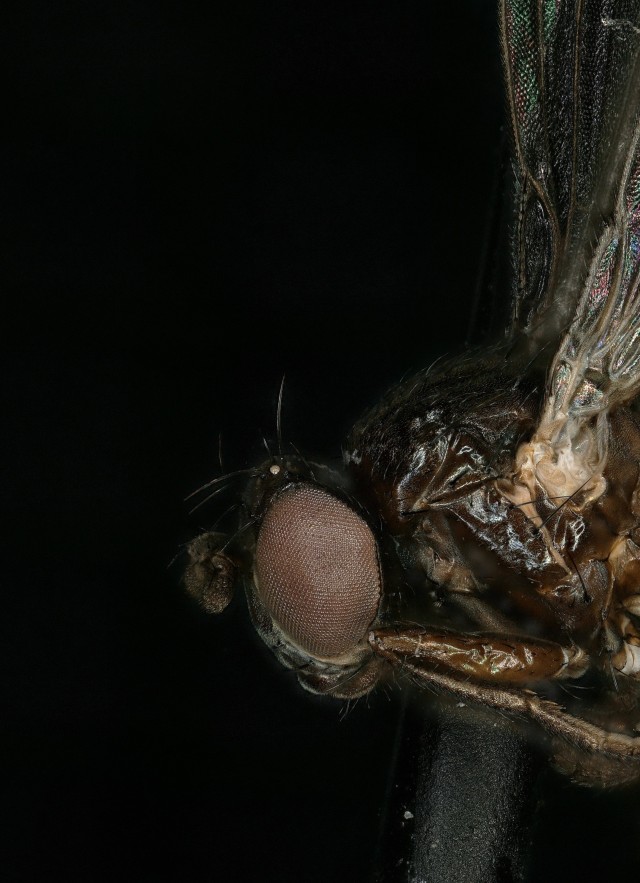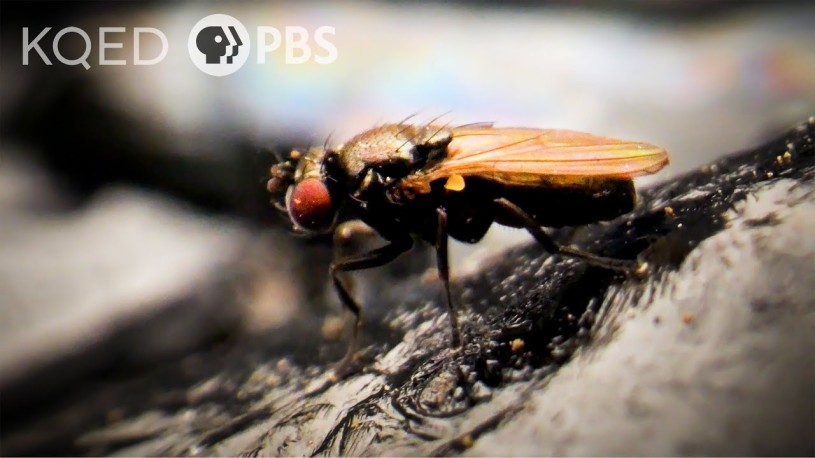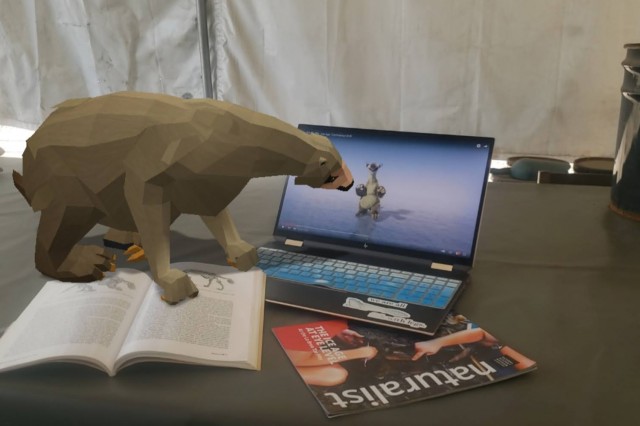Get Stuck on Petroleum Flies
KQED’s Deep Look gets up close and personal with the Tar Pits most successful (and smallest) predator

Published July 30, 2024
La Brea Tar Pits has a reputation for being a death trap, but one animal thrives among the fossils and freshly stuck critters that are entrapped every day in the asphalt seeps: the petroleum fly Helaeomyia petrolei.
Where other animals struggle to escape, petroleum fly larvae gracefully swim and adult flies practically dance across the asphalt. Explore their incredible life cycle with KQED’s Deep Look series.

Look Closer With SEM
NHM's powerful scanning electron microscope lets researchers get an even deeper look at these incredible creatures, revealing mind-blowing details. Can you figure out which end is which without reading the captions? Check out the incredible images below.
Image by Giar-Ann Kung
An SEM image of the larva's posterior (rear) end
Image by Giar-Ann Kung
An SEM image of an oil fly larva's anterior face (front) with antennae, maxillary sense organs, mouth hooks, and oral ridges visible
Image by Giar-Ann Kung
SEM image depicting the full body of an oil fly larva
1 of 1
An SEM image of the larva's posterior (rear) end
Image by Giar-Ann Kung
An SEM image of an oil fly larva's anterior face (front) with antennae, maxillary sense organs, mouth hooks, and oral ridges visible
Image by Giar-Ann Kung
SEM image depicting the full body of an oil fly larva
Image by Giar-Ann Kung
